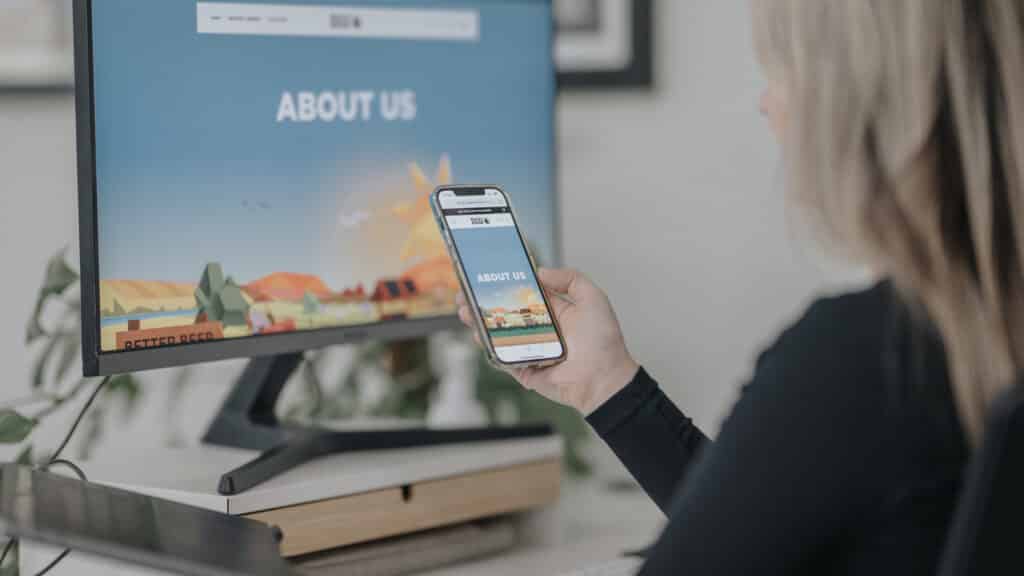There was a time when team building exercises were perceived as nothing more than a distraction. Many struggled to see the value in taking time out of the working day for seemingly frivolous group activities.
These days, attitudes have changed. Businesses across all industries are seeing the positive impact of fostering strong relationships in the workplace. From building trust to improving communication, bonding activities can boost productivity, job satisfaction and overall performance.
Here at Distl, we recognise the importance of having a cohesive, united team. In fact, it’s one of the core reasons why we rebranded as an agency back in 2020.
Every year we commit ourselves to one major team building exercise. In the past, we’ve completed a ropes course and battled it out on the paintball field, but this year we decided to tone down the adrenaline in favour of a more introspective approach.
Our Team Building Workshop
We reached out to our long-term client People Solutions to assist us with running a team building workshop. As organisational development consultants, People Solutions offer a range of services that assess and develop the potential in individuals as well as teams.
Our aim was to walk away with a better understanding of ourselves, as well as our fellow team members, to enable us to work together more effectively. To help us gain insight, People Solutions used the Myers-Briggs Type Indicator as the foundation for the workshop.
The Myers-Briggs Type Indicator
Based on the theories of Carl Jung, the Myers-Briggs Type Indicator (MBTI) is a psychometric assessment that indicates your personality preferences. Created by Katharine Cook Briggs and her daughter Isabel Briggs Myers during WWII, the questionnaire was originally designed to help women enter the industrial workforce.
The MBTI test assesses you across 4 dichotomies to identify how you perceive the world around you and formulate decisions. It provides you with a personality type comprised of 4 letters that reflect your innate preferences and how likely you are to engage in certain behaviours.
Finding Our Types
There are 16 different personality types that represent varying combinations of the 4 dichotomies. Ahead of the workshop, each member of our team completed the MBTI questionnaire, and on the day, we were given our 4-letter type as well as a supporting interpretative report. Based on our answers to the assessment, we were each able to see where we sat on the scale for each dichotomy.
Extraversion or Introversion
The first letter in each personality type refers to how you direct and receive energy. People who prefer extraversion draw their energy from the outward world, while introverts prefer to spend time alone in quiet reflection to recharge.
Understanding each other
Our team was divided in two based on who was identified as an “E” for extravert versus an “I” for introvert. The exercise was simple: come up with three questions to ask the other group.
There was a stark contrast between how each personality type handled the assignment. While the extraverts headed outside and nailed their three questions in no time at all, the introverts struggled to voice their ideas. As the extraverts returned to the room and took their seats, the introverts frantically finalised their questions.
The extraverts wanted to know how to improve their communication and be more considerate of their introverted colleagues. After a few moments of silence, the introverts began to speak up and provide guidance to the extraverts.
The questions from the introverts were based on understanding extroverted preferences. Interestingly, the introverts learned their colleagues weren’t as different from them as they originally thought.
As an extravert, our Brand Account Manager Hannah (ENFJ) has now modified her behaviours in meetings following the workshop.
“I learned that introverts are less likely to speak up in meetings if there isn’t a break in the conversation. This is an opportunity for an extravert like me to encourage introverts to participate in conversation more during meetings,” Hannah said.
Sensing or Intuition
The Sensing (S) or Intuition (N) component of the MBTI personality type relates to how you take in information. Those who lean more heavily towards Sensing are likely to rely on their five senses. They prefer tangible details and concrete facts, finding meaning in what they can see, hear, touch and taste.
On the other side of the spectrum, those with an “N” personality are more trusting of hunches and flashes of insight. They find meaning in the relationships between data, rather than the data itself, tending to look at the bigger picture.
A picture is worth 1000 words
Splitting into our two groups, we were presented with an image for a limited time and had to describe what we observed.
The “S” types made a very clear list of the details they saw in the image, identifying a hand, a rainbow, a ship, and a clock.
Meanwhile, the “N” types described the overall feeling of the image. As there was no logical link between the elements, the Intuitive ones brainstormed their own connections. Was it a dreamscape? Was it an album cover? Was it an artwork composed under the influence of recreational drugs?
It was very clear to see how people responded differently to the stimuli based on their type. Through discussion, it was identified that knowing someone’s type could improve communication and briefing processes.
Brand Account Manager Katie (ENFP) discovered how people with a Sensing preference see the world differently.
“I found it so interesting how the Sensing people were able to look at the image and see the granular details. They were able to point out objects in the image that I would not have noticed. Where I saw a story, they saw specifics pieces of a puzzle,” she said.
Thinking or Feeling
The third dichotomy demonstrates how you make decisions and come to conclusions. Those with a Thinking or “T” type are likely to rely on logic, accuracy, and objective truth. Feeling or “F” types tend to base their decisions on their personal values, wanting to understand others and find harmony.
What would you do?
Once again, we separated into our two groups, only this time we were given a scenario where we stepped into the role of a grocery store manager. We witness a customer with a full trolley exit the store without paying and were asked how we would handle the situation.
Both the Thinkers and the Feelers wanted to understand the reasons why the customer walked out, recognising they could have made an honest mistake. In the scenario, however, the customer admits to intentionally leaving with unpaid goods.
The T’s immediately turned to what was most logical, and told the customer they had to go back inside and pay, but the F’s chose to dig deeper to understand the motivations behind the customer’s actions.
Our Digital Account Manager Emily (ENFP) found it interesting that both groups started with a very similar approach, before veering off in different directions.
“When we shared with the group, the Thinkers revealed they wanted to know which items were stolen, taking a fact and logic driven approach. In the Feelings group, none of us even considered the items. We wanted to understand the person, the circumstances and why they stole,” Emily explained.
“I found this super eye-opening, and I learned how the two sides can complement each other. It will be interesting to see how this will improve projects and communication in the future”.
Judging or Perception
Lastly, the Judging (J) and Perception (P) dichotomy refers to how you prefer to lead your lifestyle. Those who like structure and order are more likely to be a “J” type, while those who are more flexible tend to be “P” types.
Plan Your Project
For the fourth and final time, we were separated into two groups and provided with an assignment. We were told we have 30 days to complete a project that requires 10 days of work. As a collective, each type had to decide how they would approach the project.
The J types were very quick to put a plan into action. Some wanted to pace themselves and space the work out over 30 days, while others wanted to get everything done upfront. Either way, each J type wanted to be nice and organised so that nothing would be left to the last minute.
On the other side of the room, the P types took a little longer to plan their approach. Ironically, they only just finished the exercise in the nick of time. Most of the P’s wanted to stagger their work over the 30-day period to leave plenty of time for rest, leisure and “vibe checks”. In the end, the P’s were organised, but it took more thinking and discussion before they were able to put a plan together.
“I found it interesting how some preferred to get their duties and responsibilities out of the way and then relax, while some preferred to enjoy their leisure time first, which helped them to be more effective and productive at work,” said Digital Account Manager Shayan (ESTJ).
“Now when I approach those who have a Judging preference, I know they will enjoy order, organisation and decisiveness. When it comes to those with the Perceiving preference, I know to be more flexible and open”.
Our Takeaways
After discussing our key learnings, it was clear the afternoon was a success. There was a lot of enthusiasm and positive energy in the room as conversation flowed freely between extraverts and introverts alike.
“The workshop made me feel more connected to my colleagues. I had conversations with people I don’t often get the chance to speak with. Understanding the different personality types also helped me to be more accepting of others,” said Hannah.
Katie felt similarly, adding that, “It wasn’t your typical, what I would consider “cheesy” team building activity. Everyone walked away knowing more about who they are and knowing more about the people they spend their work days with… and that was pretty awesome”.
By gaining insight into other people’s personalities, we’re able to see situations from different perspectives and show greater empathy towards those who may have different preferences to our own.
“I learned a lot about how my preferences influence not only my work life, but also my personal and social life,” Shayan explained.
“Communication is key in any team setting, so learning how to communicate effectively with opposing preferences will help us form a more cohesive unit”.
Across the board, our team felt all businesses would benefit from completing exercises based on the MBTI framework.
“I think other businesses should consider doing similar team building activities to improve communication, teamwork and trust in the workplace. It can help to build positive company culture and further develop the types of behaviours that enable a business to thrive,” Hannah said.






